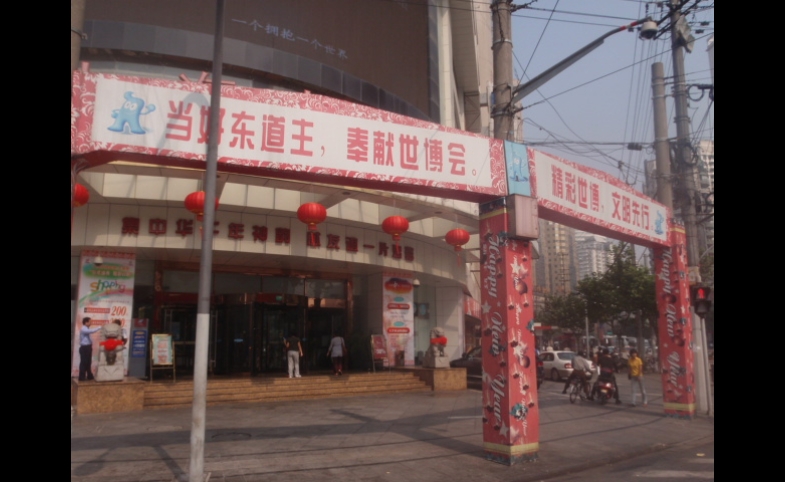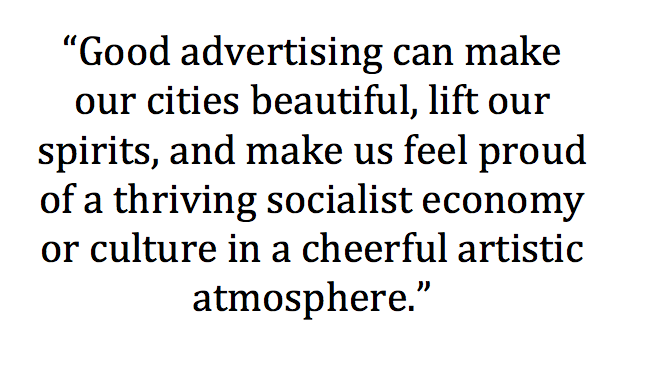Click Here for the Digital Map! After a six-month run, the 2015 World Expo in Milan closed on October 31. With the theme of “Feeding the Planet, Energy for Life,” 145 countries showcased technological...
KEEP READINGThe CPD Blog is intended to stimulate dialog among scholars and practitioners from around the world in the public diplomacy sphere. The opinions represented here are the authors' own and do not necessarily reflect CPD's views. For blogger guidelines, click here.

Shanghai 2010 World Expo at Street Level: The Local Dimensions of a Public Diplomacy Spectacle

Internationally, the 2010 Shanghai World Expo was a major tourism and branding draw card for its host city. Domestically, the Expo constituted a major source of national pride and a key vehicle for the promotion of official messages reinforcing traditional state propaganda themes. Like the Beijing Olympics two years prior, the Shanghai World Expo was an opportunity for the state to cross-brand its messages with the fervor and prestige surrounding a world-class event.
This essay’s seven photographs explore the domestic cross-branding of the World Expo with traditional propaganda messaging as it appeared in advertising posters/billboards throughout downtown Shanghai during the Expo. Although not all constitute direct political advertising, they all nevertheless perform a definite ideological role in reinforcing key propaganda themes.
The public relations machinery of the Chinese state has emerged as a formidable force in the production of messages in what some have referred to as a post-communist era. As these photographs suggest, this is due largely to an adaptation of Chinese Communist Party signs and symbols to the new advertising industry and media of the reform era and, importantly, to their increasingly decentralized and commercialized production.
These photographs provide for a vivid insight into the domestic state public relations dimensions of what was otherwise a major international public diplomacy event.
Hongqiao International Airport: “See the world without leaving the country (buchu guomen, kanbian shijie)

90% of visitors to the Shanghai Expo were from within China itself, and Shanghai stood to benefit spectacularly as a domestic tourism destination. The event posed an opportunity for Shanghai to showcase itself to the world and to enhance its domestic brand as China’s cutting edge world city.
In accordance with the Expo motto, “better city, better life,” Shanghai presented itself as a model city of the future. Accordingly, domestic tourists “were exposed to a crash course in civilised behaviour, thanks to a Shanghai government campaign to eradicate habits such as spitting, queue barging, and smoking in public.” [2]
Street corner festive bunting: “Be a good host, dedicate the World Expo (Dang haodongdaozhu, fengxian shibohui)

For the duration of the World Expo - and in its lead-up - Shanghai’s public domains were either renovated or decorated to promote the Expo and reflect its themes. Beautification efforts ranged from shop owners and residential committees doing their bit to erect banners and spruce up their surrounds, to the upgrading of parklands and commuter arteries.
Shanghai reportedly spent USD 45 billion on the Expo and associated urban improvements. Despite such efforts, there were the inevitable reports of “whispers that buildings on the main roads, which expo visitors will use… have been spruced up and painted but only on the street front. At the sides and at the back, they are said to be as shabby as ever.” [3]
Commercial billboard advertising: “Official candy of the 2010 Shanghai World Expo” (Zhongguo 2010 nian Shanghai shibohui zhiding tangguo)

A billboard advertising the Guan Sheng Yuan company’s flagship White Rabbit candy sits atop a building in Shanghai’s downtown Jing’an district.
Commercial advertising by corporate partners reinforced the aims and themes of the Expo. Many advertisers coined slogans and taglines that complemented the Expo’s motto of “Better city, better life” with playful twists on its “x makes y more z” (x rang y geng z) grammatical structure. Examples included “Let our civility make our city cleaner” (Rang womende wenming shi chengshi geng jiejing), “Guanshengyuan makes the World Expo sweeter” (Guan Sheng Yuan rang shibo geng tianmei) and “Budweiser makes the color of night more brilliant” (Baisheng rang yese geng jingcai).
Various posters affixed to Quick Mart convenience store shop front, Jing’an district

A number of commentators have argued that Chinese state propaganda posters have proven ineffective in being heard among the cacophony of advertising messages crowding contemporary China’s streetscapes. Here, Expo posters advertising official thematics of civility and good customer service mix it with commercial advertising on a convenience store window.
The poster on the bottom left advertises district government-organized “customer service day,” held on the 5th of each month in the lead-up to and during the Expo. Such messaging replicated initiatives staged in Beijing in the lead-up to the 2008 Olympics. From 11 April 2007, for example, the 11th of each month in Beijing became “queuing promotion day.”
Juvenile art competition: “Go Expo!” (Shibo jiayou)

A juvenile art exhibition on street-side hoardings along Jing’an district’s Kangding Road reflects community participation in Expo-associated activities. This exhibition sponsored by the Singapore-based Keppel Corporation, features World Expo-themed artworks by primary and middle school students in the district.
Many of the artworks in this exhibition featured strong patriotic, civics and public morality themes resonating with the major thematic preoccupations of traditional state propaganda efforts. It was one of many activities organized as part of the government’s Expo 600 Day Action Plan, which aimed at “the improvement of the city’s image, the improvement of services, the improvement of city management, the improvement of urban civilization, and the improvement of spiritual civilization.”
Street-side propaganda hoardings: “World civilization’s grand occasion, our expo” (Shijie wenmingde shenghui, women dajiade shibo)

According to Steven Wayne Lewis, who has researched outdoor propaganda in Shanghai, “urban outdoor political advertisements… are ubiquitous and yet costly – which suggests that the state believes them to be influential.”[4] And during the World Expo, outdoor propaganda in Shanghai was more ubiquitous than ever.
Anne-Marie Brady notes that Olympic propaganda was the main theme of public bulletin boards and other forms of local propaganda in the two years leading up to the Games. [5] As with many practices, this was replicated in Shanghai. During preparations for the Expo, official messaging increasingly combined references to civilization and the Expo, with people urged to “Welcome the Expo, stress civilization and cultivate a new style” (ying shibo jiang wenming shu xinfeng).
World Expo Civilization Compact (Shibo wenming gongyue)

An article published in Shanghai’s World Expo Magazine states “Common residents do not stand under the same spotlight as diplomats or Expo representatives; however, they help to enhance the image of Shanghai with their daily practices.” Such measures as the promulgation of the World Expo Civilization Compact aimed to put encourage citizen behaviors that promoted a civilized image of Shanghai as World Expo host city.
The compact, which was otherwise a carbon copy of existing resident compacts, employed Expo language to stipulate well-worn moral, political and patriotic tenets, such as playing good hosts, obeying road rules, being civilized, not littering, protecting the environment, using polite language and queuing.
Footnotes
[1] Anderson, 1981.
[2] Waldmeir, 2011.
[3] Upe, 2010.
[4] 2002.
[5] 2009.
[6] Ding, 2005.
Sources
All photographs are from the collection of the Line 21 Project (www.line21project.org).
Anderson, M. H. (1981) “China's "great leap" toward Madison Avenue”, Journal of Communication, 31(1), 10–22.
Brady, Ann-Marie (2009) “The Beijing Olympics as a Campaign of Mass Distraction”, The China Quarterly.
Ding, Y. (2005) “Shanghai's Image: Open, equal, civilized and trustworthy”, World Expo Magazine, Issue 3, http://www.expo2010.cn/expo/expoenglish/wem/0503/userobject1ai36049.html, accessed 02 January 2011.
Lewis, Steven W (2002) "'What Can I Do For Shanghai?' Selling Spiritual Civilization in Chinese Cities," in Stephanie Hemelryk Donald, Michael Keane and Yin Hong, eds, Media in China: Consumption, Content and Crisis, RoutledgeCurzon. pp. 139-151.
Upe, R. (2010) “Red Hot Shanghai”, Sydney Morning Herald, 01 May, http://www.smh.com.au/travel/red-hot-shanghai-20100430-txre.html, accessed 09 March 2011.
Waldmeir, P. (2010) “Shanghai: Expo has a transforming effect”, Financial Times, 27 October, http://www.ft.com/cms/s/0/de3414cc-dfc8-11df-bed9-00144feabdc0.html - ixzz1HJr8N7wt, accessed 20 March 2011.
Visit CPD's Online Library
Explore CPD's vast online database featuring the latest books, articles, speeches and information on international organizations dedicated to public diplomacy.
POPULAR ARTICLES
-
November 3
-
November 5
-
November 13
-
October 16
-
October 16
Join the Conversation
Interested in contributing to the CPD Blog? We welcome your posts. Read our guidelines and find out how you can submit blogs and photo essays >.













